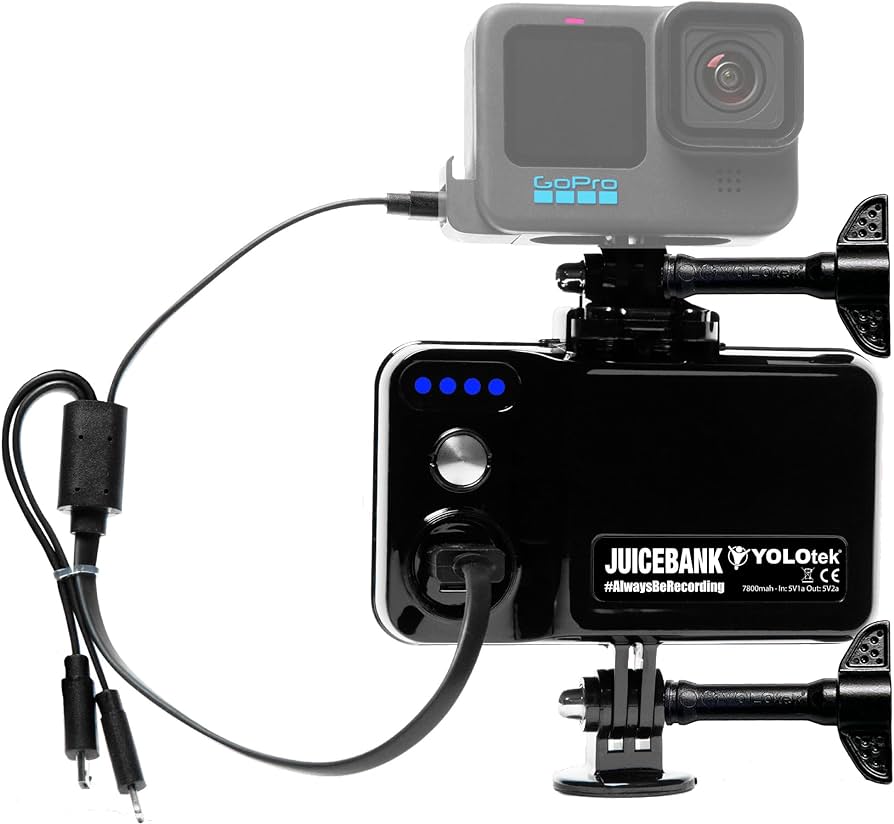To clean a transducer, gently wipe the surface using a soft cloth and mild detergent. Avoid using abrasive cleaners or excessive force that may damage the transducer.
Importance Of Transducer Maintenance
Regular maintenance is crucial for the longevity of transducers. Neglecting maintenance can lead to costly damages. Cleaning the transducer involves a few simple steps. Start by turning off the power and unplugging the device. Gently remove any debris using a soft brush or cloth.
Make sure not to use water or abrasive cleaners as they can damage the sensitive components. Pay close attention to the connectors and cables, ensuring they are clean and free from corrosion. Inspect the transducer for any signs of wear or damage, such as cracks or loose connections.
Taking the time to clean and inspect your transducer regularly will ensure optimal performance and extend its lifespan. So, make it a habit to incorporate transducer maintenance into your regular cleaning routine.
Types Of Transducers
Transducers come in various types, each with its specific maintenance requirements. Understanding these variations is crucial for effective cleaning. Regular cleaning ensures optimal performance and longevity. It is important to clean the transducer regularly to prevent the accumulation of dirt, debris, or mineral deposits.
The type of transducer will determine the cleaning method. For example, a piezoelectric transducer requires gentle cleaning using a non-abrasive cloth and mild detergent. On the other hand, a capacitive transducer may require a more delicate approach, using compressed air or a soft brush.
Ultrasonic transducers might necessitate specific cleaning solutions or ultrasonic cleaning equipment. It is recommended to consult the manufacturer’s guidelines to ensure accurate cleaning procedures. By understanding the various types of transducers and their specific maintenance requirements, you can effectively clean and maintain them for optimal performance.
Gathering The Necessary Tools And Materials
To properly clean a transducer, it is important to gather all the necessary tools and materials. Start by collecting a soft bristle brush, mild soap, distilled water, and a lint-free cloth. These items will help to ensure a thorough cleaning process.
Next, make sure to have a small screwdriver or brush to remove any dirt or debris from the transducer’s surface. It is crucial to handle the transducer with care to avoid any damage. Once the tools and materials are ready, gently brush the transducer’s surface using the soft bristle brush and mild soap solution.
Rinse the transducer with distilled water and dry it completely with a lint-free cloth. This cleaning process will remove any dirt or build-up from the transducer and ensure optimal performance.
Safety Precautions
Before cleaning the transducer, it is crucial to prioritize safety measures. Wear protective gloves, goggles, and clothing. Switch off all power sources and unplug any connected equipment. Place a towel or waterproof material underneath the transducer to protect against spilled cleaning agents.
Choose the appropriate cleaning solution according to the manufacturer’s recommendations. Never use abrasive materials or strong chemicals that could damage the transducer. Gently wipe the surface using a soft cloth or sponge, ensuring not to apply excessive pressure. After cleaning, allow the transducer to dry completely before reconnecting and operating it.
By taking these safety precautions, you can effectively clean your transducer without encountering any hazards.
Step 1: Removing The Transducer
To safely remove the transducer from the equipment, it is important to follow the proper technique. Start by making sure the equipment is turned off. Then, carefully disconnect any cables or wires connected to the transducer. Next, locate the mounting screws that secure the transducer to the equipment and use a screwdriver to remove them.
Gently lift the transducer away from the equipment, being cautious not to damage any surrounding components. Once the transducer is removed, it can be cleaned using a soft cloth and a mild cleaning solution. Take care not to use any abrasive materials that could scratch or damage the transducer.
Finally, reattach the transducer to the equipment following the reverse steps and ensure all connections are secure.

Credit: tovatech.com
Step 2: Inspection And Assessment
After completing Step 1, it’s time to move on to Step 2: Inspection and Assessment. Take a close look at the transducer to check for any visible damage or debris. Look out for cracks, scratches, or loose parts. Carefully examine the cable and connectors as well.
If you notice any signs of wear and tear, it’s important to address them promptly. Use a flashlight to get a better view of hard-to-see areas. Remove any dirt or debris using a soft brush or cloth. Avoid using harsh chemicals that could potentially damage the transducer.
By thoroughly inspecting and assessing your transducer, you’ll be able to identify any issues that may affect its performance and take appropriate action to keep it in optimal condition.
Step 3: Cleaning Solutions And Techniques
Transducers are delicate instruments that require proper cleaning to maintain their functionality. For effective maintenance, it is recommended to use non-abrasive cleaning solutions and techniques. A gentle mixture of warm water and mild detergent can work wonders in removing dirt and grime.
Avoid using harsh chemicals that can damage the transducer. Use a soft cloth or sponge to gently wipe the surface, ensuring no excess moisture is left behind. Pay special attention to crevices and hard-to-reach areas. If necessary, a cotton swab can be used for precision cleaning.
Remember to always follow the manufacturer’s instructions for cleaning and maintenance. By following these recommended cleaning solutions and techniques, you can ensure that your transducer stays clean and in optimal working condition.
Step 4: Cleaning The Transducer
Transducers are an essential component of many devices, and proper cleaning is crucial to maintain their functionality. Start by disconnecting the transducer from its power source and removing any attached cables. Gently wipe the surface of the transducer with a soft, lint-free cloth to remove any dust or debris.
Use a mild detergent and warm water solution to clean the transducer’s components, ensuring thorough but gentle scrubbing. Rinse with clean water and dry completely before reattaching the cables. Avoid using harsh chemicals or abrasive materials that may damage the transducer.
Regular cleaning of the transducer will help prolong its lifespan and ensure accurate readings.
Step 5: Drying And Reassembling
Drying the transducer and reassembling it correctly are crucial steps in cleaning the device. After cleaning, ensure the transducer is completely dry before assembling it back together. This prevents any moisture from causing damage or dysfunction. To dry the transducer, gently pat it dry with a soft cloth or allow it to air dry naturally.
Avoid using heat or excessive pressure as this can harm the delicate components. Once dry, carefully reassemble the transducer following the manufacturer’s instructions or guidelines. Take your time and make sure each part fits together snugly and securely. Paying attention to these best practices will help maintain the optimal performance and longevity of your transducer.
Regular Cleaning Schedule
Establishing a regular maintenance schedule is crucial for ensuring the proper cleaning of a transducer. By adhering to a routine, you can effectively maintain the functionality and accuracy of this essential device. Regular cleaning not only prevents the buildup of debris but also enhances the longevity of the transducer.
Begin by inspecting the transducer for any signs of dirt or grime accumulation. Gently wipe it down using a soft cloth and a mild cleaning solution. Take care to avoid any abrasive materials that could damage the transducer surface. Next, clean the transducer’s connectors and cables to maintain optimal signal transmission.
Lastly, it’s important to regularly check and replace any worn-out parts or accessories. By following these guidelines and implementing a consistent cleaning schedule, you can maximize the performance and lifespan of your transducer.
Troubleshooting Transducer Issues
Transducer issues can be a hassle, but rest assured, there are solutions. One common problem is poor signal quality. To address this, ensure the transducer is clean and free from debris. Regularly inspect and clean the transducer, paying attention to the face and mounting area.
Another issue is incorrect positioning, resulting in inaccurate readings. Double-check the transducer’s placement and make any necessary adjustments. If the transducer is not powering on, check the connections and power source. You may also need to update the transducer’s software or firmware.
Lastly, if you’re experiencing intermittent or inconsistent signals, inspect the cabling and connections for any damage. By following these troubleshooting steps, you can keep your transducer functioning at its best.
Professional Maintenance Services
Transducer maintenance is crucial for optimal performance. While cleaning it yourself is possible, there are instances when seeking professional assistance is necessary. For complex issues like internal damage or calibration problems, professionals possess the expertise to handle them. Additionally, if you lack technical knowledge or don’t have the necessary tools, it’s wise to leave it to the experts.
Furthermore, if you’re unsure about troubleshooting methods or the proper cleaning technique, a professional can provide guidance. Seeking their assistance ensures the transducer is cleaned thoroughly, minimizing any potential damage. Remember, professional maintenance services are available to tackle any transducer issues effectively.
Reach out to them when needed to keep your transducer in top-notch condition.
Frequently Asked Questions Of How To Clean A Transducer
How Often Should I Clean My Transducer?
It is recommended to clean your transducer every 2-3 months to ensure optimal performance. Regular cleaning helps prevent buildup of debris and mineral deposits that can affect accuracy and clarity of readings.
Conclusion
Keeping your transducer clean is crucial to ensure its optimal performance and longevity. Regular maintenance and cleaning can prevent the buildup of marine growth, debris, and other contaminants that can affect its accuracy and signal transmission. By following the steps outlined in this blog post, you can effectively clean your transducer without causing any damage or interference.
Remember to use gentle cleaning agents, soft brushes, and a soft cloth to avoid scratching the surface. Pay attention to the connections and wiring, ensuring they are secure and free from corrosion. Regularly inspect and clean your transducer to prolong its lifespan and maintain its functionality.
So, whether you are an avid angler or a boating enthusiast, make transducer cleaning a regular part of your maintenance routine. Your transducer will thank you with crisp, clear sonar data. Happy cleaning!




